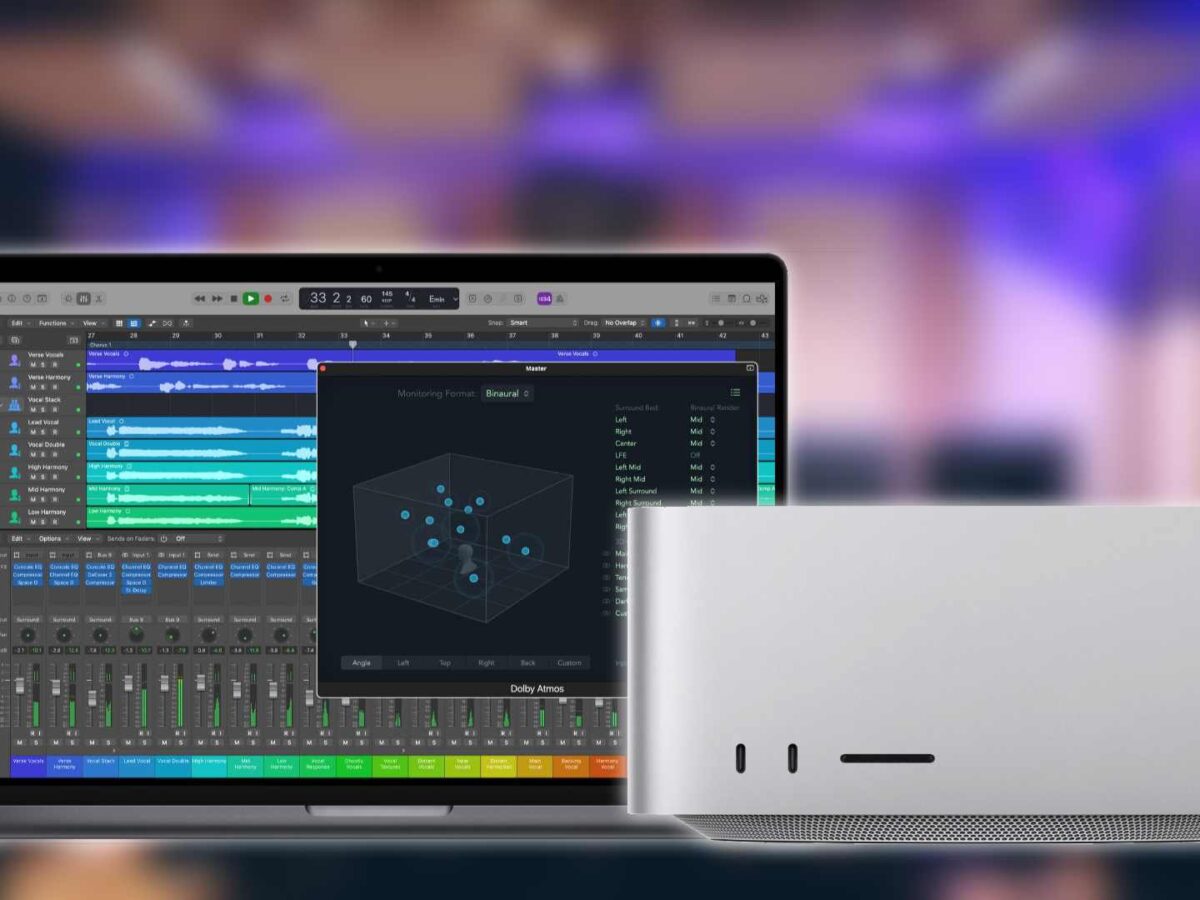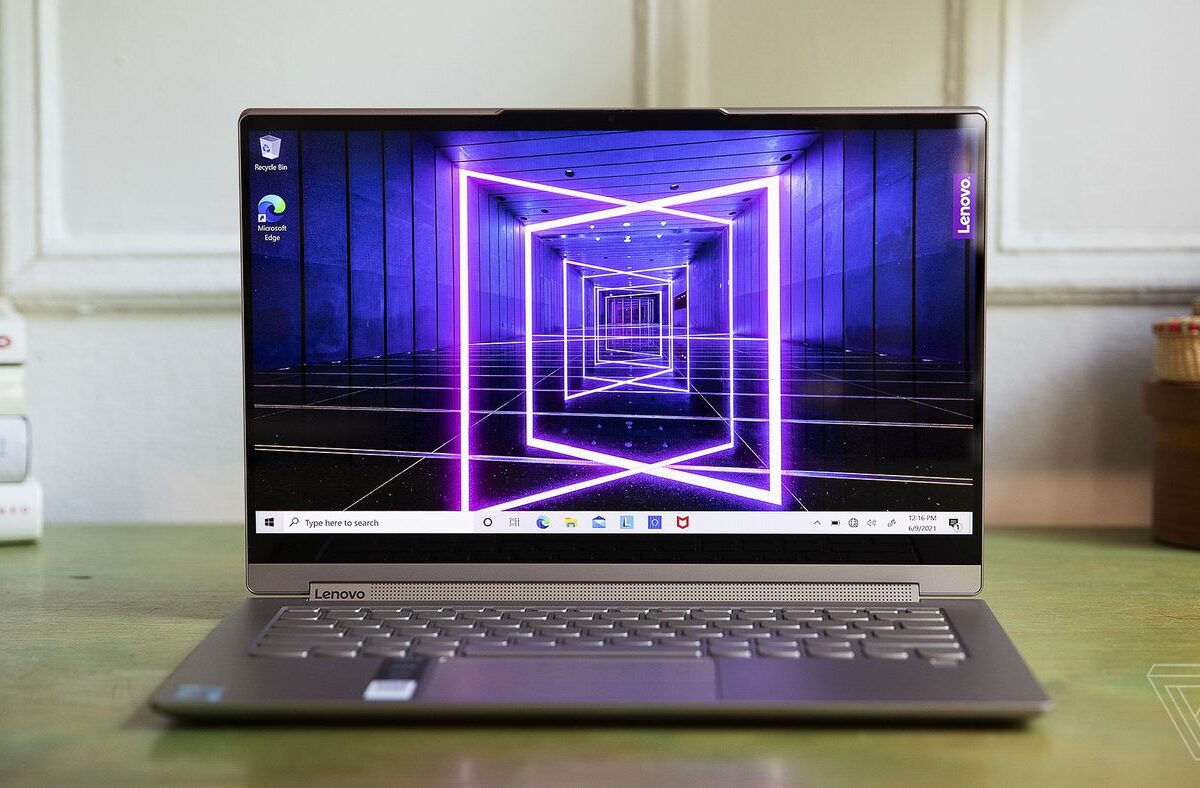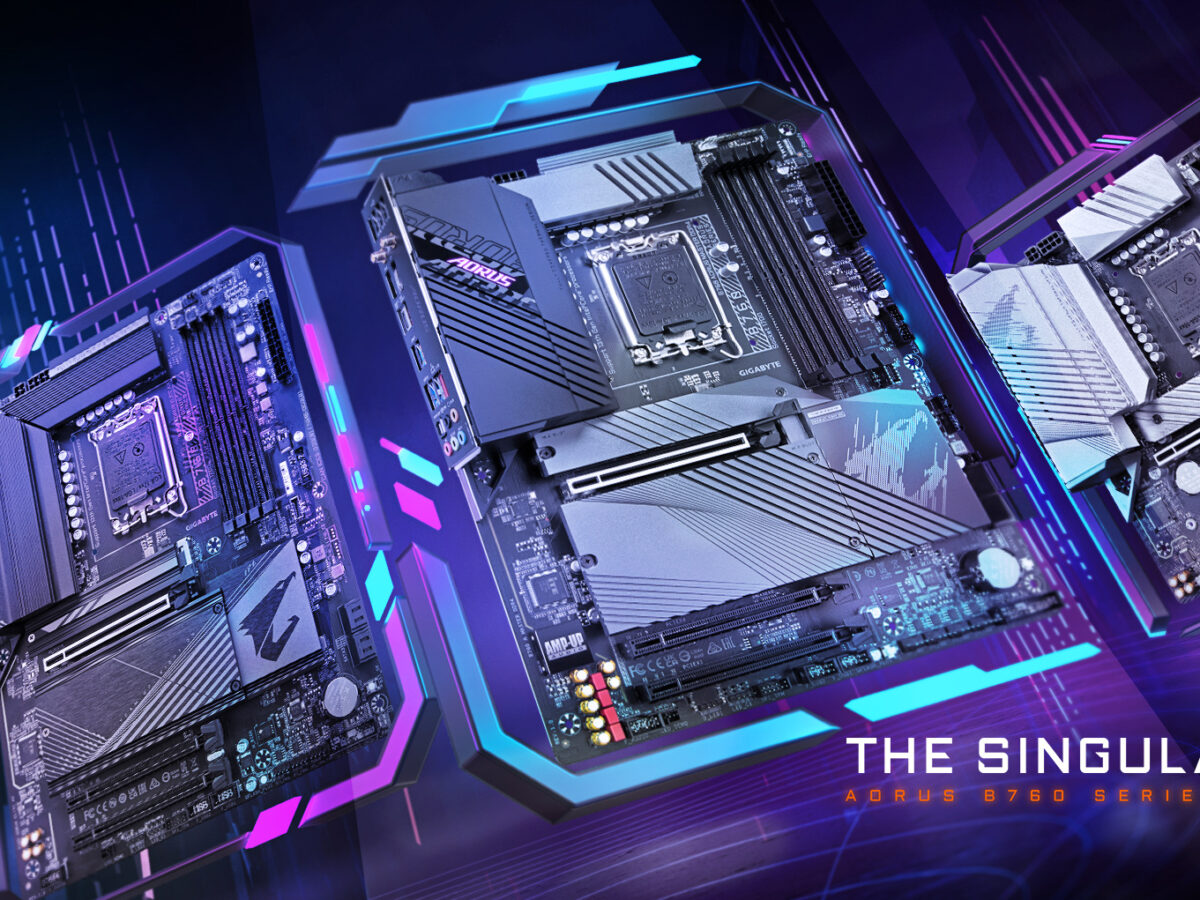Welcome, savvy shoppers and deal enthusiasts! If you’re always on the lookout for unbeatable bargains and exclusive discounts, you’re in for a treat. In the dynamic world of online shopping, navigating through the multitude of sales events can be a daunting task. Fear not, as we’ve got your back with Amazon Sale Calendar – your […]
Category: Computers
A Comprehensive Buying Guide for Computers: Top Brands and Budget Options
If you’re looking to buy a new computer, it can be overwhelming to navigate the vast array of options available in the market. This guide aims to provide you with a comprehensive buying guide for computers, including information on top brands and budget options.
Firstly, it’s important to determine what you’ll be using your computer for. If you’re a gamer or a graphic designer, you’ll want a computer with a powerful processor and graphics card. If you’re just using your computer for basic tasks like browsing the internet and word processing, you don’t need a high-end computer.
When it comes to top brands, some of the most popular ones are:
- Apple: Apple computers are known for their sleek designs and reliable performance. They run on the macOS operating system, which is known for its ease of use.
- Dell: Dell is a popular brand for both desktops and laptops. They offer a wide range of options, from budget-friendly to high-end.
- HP: HP offers a range of computers, from budget-friendly to high-end, and they’re known for their durability.
- Lenovo: Lenovo is another popular brand, offering a range of options from budget-friendly to high-end. They’re known for their reliability and excellent customer service.
If you’re on a tight budget, there are still plenty of options available. Here are some of the best budget-friendly computers:
- Acer Aspire 5: This laptop offers excellent performance for the price, with a 10th-generation Intel Core i3 processor and 4GB of RAM.
- HP Pavilion: The HP Pavilion is a great budget-friendly option, offering a 10th-generation Intel Core i5 processor and 8GB of RAM.
- Lenovo IdeaPad 3: This laptop is another great budget option, offering an AMD Ryzen 5 processor and 8GB of RAM.
- Dell Inspiron 15: The Dell Inspiron 15 is a great budget option for those looking for a larger screen, offering a 15.6-inch display, 10th-generation Intel Core i3 processor, and 8GB of RAM.
When it comes to buying a computer, it’s important to do your research and choose a brand and model that suits your needs and budget. By using this comprehensive buying guide, you can make an informed decision and find the perfect computer for you.
Save Extra Money on Computers with AskmeOffers: Latest Offers, Deals, and Promo Codes
If you’re in the market for a new computer, you may be looking for ways to save some extra money. That’s where AskmeOffers comes in. AskmeOffers is a platform that offers the latest offers, deals, and promo codes on top brands in Computers, helping you save extra money on your purchase.
By visiting AskmeOffers, you can discover a wide range of discounts and sales on popular computer brands like Dell, HP, Lenovo, and Apple. These discounts can range from a percentage off the total purchase price to free shipping and even free gifts with purchase.
In addition to offering the latest deals and promo codes, AskmeOffers also provides news and updates on upcoming sales and promotions. This means that you can stay up-to-date with the latest ways to save on computers and be the first to take advantage of these offers.
To use AskmeOffers, simply visit the website and search for the computer brand or store you’re interested in. You’ll be presented with a list of current offers and deals, along with the promo codes you’ll need to redeem them. Simply copy and paste the promo code at checkout to apply the discount to your purchase.
With AskmeOffers, you can save extra money on your computer purchase, without sacrificing quality or features. So before you make your next computer purchase, be sure to check out the latest offers, deals, and promo codes on AskmeOffers.
Product Comparison of Computers: Features, Pricing, and Reviews of Popular Brands
To help you make an informed decision when buying a computer, we’ve created a product comparison of popular brands, including their features, pricing, and reviews. Please note that prices may vary depending on the model and configuration.
| Brand | Features | Price Range | Reviews |
|---|---|---|---|
| Apple | Sleek design, reliable performance, MacOS operating system | $1,099 – $3,299 | 4.5/5 on Apple.com |
| Dell | Wide range of options, durability, excellent customer service | $299 – $4,999 | 4.2/5 on Dell.com |
| HP | Budget-friendly to high-end options, durability, good performance | $229 – $4,399 | 4.2/5 on HP.com |
| Lenovo | Reliable performance, excellent customer service, budget-friendly to high-end options | $229 – $3,999 | 4.3/5 on Lenovo.com |
- Apple computers are known for their sleek design and reliable performance, running on the MacOS operating system. However, they tend to be more expensive than other brands, with a price range of $1,099 to $3,299. Customers on Apple.com have rated them 4.5/5, indicating high satisfaction.
- Dell is known for their wide range of options, durability, and excellent customer service. Their pricing ranges from $299 to $4,999, making them a good option for those on a budget as well as those looking for high-end options. Customers on Dell.com have rated them 4.2/5.
- HP offers a range of options, from budget-friendly to high-end, with good performance and durability. Their pricing ranges from $229 to $4,399, and customers on HP.com have rated them 4.2/5.
- Lenovo offers reliable performance, excellent customer service, and a range of budget-friendly to high-end options. Their pricing ranges from $229 to $3,999, and customers on Lenovo.com have rated them 4.3/5.
When considering which brand of computer to buy, it’s important to take into account your specific needs, budget, and preferences. All four of these brands offer excellent options with different strengths and weaknesses. By comparing their features, pricing, and reviews, you can make an informed decision and find the perfect computer for you.
Computers for Every Budget: Affordable Options and High-End Brands
To help you find a computer that fits your budget, we’ve created a list of options that range from affordable to high-end. Please note that prices may vary depending on the model and configuration.
| Budget | Brand | Model | Features | Price Range |
|---|---|---|---|---|
| Low | Acer | Aspire 5 | Intel Core i3 processor, 4GB RAM, 128GB SSD, 15.6-inch display | $399 – $499 |
| Low | HP | Stream 14 | Intel Celeron processor, 4GB RAM, 64GB eMMC storage, 14-inch display | $239 – $299 |
| Low | Lenovo | IdeaPad 3 | AMD Ryzen 3 processor, 8GB RAM, 256GB SSD, 15.6-inch display | $399 – $499 |
| Mid | Dell | Inspiron 15 5000 | Intel Core i5 processor, 8GB RAM, 256GB SSD, 15.6-inch display | $599 – $799 |
| Mid | HP | Pavilion x360 | Intel Core i5 processor, 8GB RAM, 256GB SSD, 14-inch touchscreen display | $599 – $799 |
| Mid | Lenovo | Flex 5 | AMD Ryzen 5 processor, 8GB RAM, 256GB SSD, 14-inch touchscreen display | $599 – $799 |
| High | Apple | MacBook Pro | Apple M1 chip, 8GB RAM, 256GB SSD, 13-inch Retina display | $1,299 – $1,499 |
| High | Dell | XPS 13 | Intel Core i7 processor, 16GB RAM, 512GB SSD, 13.3-inch display | $1,099 – $1,599 |
| High | Lenovo | ThinkPad X1 Carbon | Intel Core i7 processor, 16GB RAM, 1TB SSD, 14-inch display | $1,699 – $2,499 |
- For those on a low budget, Acer’s Aspire 5, HP’s Stream 14, and Lenovo’s IdeaPad 3 are all excellent options with prices ranging from $399 to $499. These computers offer basic features but are suitable for everyday use.
- For those with a mid-range budget, Dell’s Inspiron 15 5000, HP’s Pavilion x360, and Lenovo’s Flex 5 are all great options with prices ranging from $599 to $799. These computers offer better performance and additional features, such as touchscreen displays.
- For those with a high-end budget, Apple’s MacBook Pro, Dell’s XPS 13, and Lenovo’s ThinkPad X1 Carbon are all excellent options with prices ranging from $1,099 to $2,499. These computers offer top-of-the-line features, including powerful processors, large amounts of RAM and storage, and high-quality displays.
There are computers available for every budget, from affordable options to high-end brands. By considering your specific needs and budget, you can find the perfect computer that meets your requirements and fits your wallet.
Competitive Landscape Analysis of Computers: SWOT Analysis of Major Players
To provide an overview of the competitive landscape in the computer industry, we’ve conducted a SWOT analysis of major players. SWOT stands for Strengths, Weaknesses, Opportunities, and Threats.
| Brand | Strengths | Weaknesses | Opportunities | Threats |
|---|---|---|---|---|
| Apple | Strong brand recognition, high-quality design and performance, loyal customer base | High prices, limited compatibility with other operating systems | Expansion into new markets, increasing demand for high-end computers | Competition from other brands, potential supply chain disruptions |
| Dell | Wide range of products, excellent customer service, strong brand reputation | Limited brand recognition compared to competitors, vulnerability to market fluctuations | Expansion into new markets, increasing demand for remote work solutions | Strong competition from other brands, potential supply chain disruptions |
| HP | Wide range of products, good value for the price, established brand reputation | Quality control issues, customer support complaints | Expansion into new markets, increasing demand for remote work solutions | Competition from other brands, potential supply chain disruptions |
| Lenovo | Good value for the price, reliable performance, strong customer service | Limited brand recognition compared to competitors, lack of diversity in product offerings | Expansion into new markets, increasing demand for remote work solutions | Strong competition from other brands, potential supply chain disruptions |
- Apple has a strong brand recognition, with a loyal customer base that values the high-quality design and performance of their products. However, their high prices and limited compatibility with other operating systems may deter some potential customers. An opportunity for Apple is to expand into new markets and meet the increasing demand for high-end computers. A threat for Apple is competition from other brands and potential supply chain disruptions.
- Dell offers a wide range of products and excellent customer service, contributing to their strong brand reputation. However, they may have limited brand recognition compared to competitors and are vulnerable to market fluctuations. An opportunity for Dell is to expand into new markets and meet the increasing demand for remote work solutions. A threat for Dell is strong competition from other brands and potential supply chain disruptions.
- HP offers a wide range of products at a good value for the price, with an established brand reputation. However, they have faced quality control issues and complaints about customer support. An opportunity for HP is to expand into new markets and meet the increasing demand for remote work solutions. A threat for HP is competition from other brands and potential supply chain disruptions.
- Lenovo offers good value for the price, reliable performance, and strong customer service. However, they may have limited brand recognition compared to competitors and lack diversity in product offerings. An opportunity for Lenovo is to expand into new markets and meet the increasing demand for remote work solutions. A threat for Lenovo is strong competition from other brands and potential supply chain disruptions.
The computer industry is highly competitive, with each major player having its own set of strengths, weaknesses, opportunities, and threats. By understanding these factors, businesses can better position themselves in the market and meet the changing demands of consumers.
Latest Trends and Innovations in the Computers Market: An Overview of What’s New
The computer market is constantly evolving, with new trends and innovations emerging all the time. Here’s an overview of what’s new in the computer market:
- Increased Demand for Remote Work Solutions: The COVID-19 pandemic has led to an increased demand for remote work solutions, such as laptops with long battery life and powerful processors. As more people work from home, the need for reliable and efficient remote work solutions is growing.
- Rise of Gaming Laptops: Gaming laptops are becoming more popular, with manufacturers releasing high-end models with powerful graphics cards and high refresh rate displays. As esports and gaming continue to grow in popularity, the demand for gaming laptops is expected to increase.
- Expansion of AI and Machine Learning: Artificial intelligence and machine learning are being integrated into more and more computer systems, allowing for advanced data analysis and automation. This technology is being used in a variety of industries, from finance to healthcare.
- Increased Emphasis on Privacy and Security: With growing concerns about data breaches and online privacy, there is an increased emphasis on privacy and security features in computers. Manufacturers are implementing features such as biometric authentication and enhanced encryption to protect user data.
- Advances in Quantum Computing: Quantum computing is a new technology that has the potential to revolutionize computing. Quantum computers are capable of processing vast amounts of data at unprecedented speeds, which could have significant implications for industries such as finance and healthcare.
The computer market is constantly evolving, with new trends and innovations emerging all the time. As technology advances, we can expect to see continued growth in areas such as remote work solutions, gaming laptops, AI and machine learning, privacy and security, and quantum computing.
Computers for Different Age Groups and Preferences: From Kids to Seniors
When it comes to buying a computer, different age groups and preferences may have different needs and requirements. Here’s a list of computers suitable for different age groups and preferences, from kids to seniors. Please note that prices may vary depending on the model and configuration.
Computers for Kids
| Brand | Model | Features | Price Range |
|---|---|---|---|
| Acer | Chromebook Spin 311 | Lightweight, durable, spill-resistant keyboard, Google Classroom compatible | $279 – $329 |
| HP | Stream 11 | Lightweight, compact, Microsoft Office 365 included, kid-friendly design | $229 – $279 |
| Lenovo | Chromebook Duet | Lightweight, detachable keyboard, long battery life, Google Classroom compatible | $249 – $299 |
Computers for Students
| Brand | Model | Features | Price Range |
|---|---|---|---|
| Apple | MacBook Air | Lightweight, fast performance, Retina display, long battery life | $999 – $1,299 |
| Dell | Inspiron 15 5000 | Large display, fast performance, long battery life, Windows 10 included | $599 – $799 |
| Lenovo | Yoga C740 | Touchscreen display, fast performance, long battery life, Windows 10 included | $699 – $899 |
Computers for Professionals
| Brand | Model | Features | Price Range |
|---|---|---|---|
| Apple | MacBook Pro | High performance, Retina display, long battery life, MacOS operating system | $1,299 – $3,299 |
| Dell | XPS 13 | Lightweight, fast performance, large display, Windows 10 included | $1,099 – $1,599 |
| Lenovo | ThinkPad X1 Carbon | Lightweight, durable, fast performance, Windows 10 included | $1,699 – $2,499 |
Computers for Seniors
| Brand | Model | Features | Price Range |
|---|---|---|---|
| Acer | Aspire 5 | Large display, easy to use, fast performance, long battery life | $399 – $599 |
| HP | Pavilion 14 | Large display, easy to use, fast performance, Windows 10 included | $599 – $799 |
| Lenovo | IdeaPad 3 | Large display, easy to use, fast performance, Windows 10 included | $399 – $599 |
When choosing a computer, it’s important to consider your specific needs and preferences, as well as your age group. Whether you’re a kid, a student, a professional, or a senior, there are computers available that suit your needs and preferences. By using this list as a guide, you can make an informed decision and find the perfect computer for you.
Expert Reviews and Ratings to Help Customers Choose the Best Computers
To help customers make an informed decision when buying a computer, we’ve compiled expert reviews and ratings from trusted sources. Here’s an overview of the top-rated computers based on these reviews. Please note that prices may vary depending on the model and configuration.
| Brand | Model | Expert Reviews and Ratings |
|---|---|---|
| Apple | MacBook Air | 4.5/5 on CNET, 4.5/5 on TechRadar, 4.5/5 on PCMag |
| Dell | XPS 13 | 4.5/5 on CNET, 5/5 on TechRadar, 4.5/5 on PCMag |
| HP | Spectre x360 | 4.5/5 on CNET, 4.5/5 on TechRadar, 4.5/5 on PCMag |
| Lenovo | ThinkPad X1 Carbon | 4.5/5 on CNET, 4/5 on TechRadar, 4/5 on PCMag |
- Apple’s MacBook Air received high ratings from multiple sources, with a score of 4.5/5 on CNET, TechRadar, and PCMag. Experts praised its lightweight design, Retina display, and long battery life.
- Dell’s XPS 13 also received high ratings, with a score of 4.5/5 on CNET and PCMag, and a perfect score of 5/5 on TechRadar. Experts praised its fast performance, lightweight design, and large display.
- HP’s Spectre x360 received high ratings across the board, with a score of 4.5/5 on CNET, TechRadar, and PCMag. Experts praised its stylish design, fast performance, and long battery life.
- Lenovo’s ThinkPad X1 Carbon received a score of 4.5/5 on CNET and PCMag, and 4/5 on TechRadar. Experts praised its lightweight and durable design, fast performance, and long battery life.
Expert reviews and ratings can be a useful tool when choosing a computer. The top-rated computers in this list, including the MacBook Air, XPS 13, Spectre x360, and ThinkPad X1 Carbon, all offer excellent features and performance. By considering these expert opinions, customers can make an informed decision and find the perfect computer for their needs.
Making Computers Environmentally Friendly and Socially Responsible: Sustainability and Corporate Social Responsibility
As consumers become more environmentally conscious and socially aware, companies need to prioritize sustainability and corporate social responsibility (CSR) when producing computers. Here are some ways companies can make their computers more environmentally friendly and socially responsible:
- Use Recyclable Materials: Companies can reduce their environmental impact by using recyclable materials in their computers, such as aluminum, glass, and plastic. They can also design their products to be easily disassembled and recycled at the end of their life cycle.
- Energy Efficiency: Energy-efficient components and power management software can be used to reduce the amount of energy computers consume. By using energy-efficient components, companies can reduce their carbon footprint and help consumers save money on their energy bills.
- Reduce E-Waste: Electronic waste, or e-waste, is a growing environmental problem. Companies can reduce e-waste by designing their computers to have a longer lifespan, making them upgradable, and offering trade-in or recycling programs.
- Ethical Sourcing: Companies can ensure their supply chain is socially responsible by sourcing components from suppliers who adhere to ethical and sustainable practices. This includes ensuring workers are paid fairly and work in safe conditions, as well as reducing the environmental impact of production processes.
- Social Impact: Companies can make a positive social impact by donating a portion of profits to charitable organizations or investing in community initiatives.
By prioritizing sustainability and CSR, companies can not only reduce their environmental impact but also build a positive brand image and attract socially conscious consumers.
Making computers environmentally friendly and socially responsible requires a holistic approach that considers the entire product life cycle. By using recyclable materials, promoting energy efficiency, reducing e-waste, ensuring ethical sourcing, and making a positive social impact, companies can demonstrate their commitment to sustainability and CSR. This not only benefits the environment and society but also can contribute to long-term business success.
Factors to Consider Before Buying Computers: A Guide to Choosing the Right Product
When it comes to buying a computer, it can be overwhelming to navigate the many options available. Here are some factors to consider before making a purchase to help you choose the right product:
- Usage: Consider what you will be using the computer for. Will it be for basic tasks such as browsing the web and checking email, or will it be for more demanding tasks such as video editing or gaming?
- Operating System: There are three main operating systems: Windows, MacOS, and Chrome OS. Consider which operating system you are most comfortable with or which is most compatible with your needs.
- Processor: The processor is the brain of the computer and affects its performance. Consider the type of processor and the number of cores when choosing a computer.
- RAM: Random Access Memory (RAM) affects the computer’s ability to run multiple programs at once. Consider the amount of RAM when choosing a computer.
- Storage: Consider the amount of storage you need, whether it’s a traditional hard drive or a solid-state drive (SSD) for faster performance.
- Display: Consider the size and resolution of the display, as well as whether you need a touchscreen or not.
- Portability: Consider whether you need a portable laptop or a desktop computer, and whether you need a long battery life or not.
- Price: Consider your budget and choose a computer that offers the best value for your money.
- Brand: Consider the reputation of the brand and their customer support, as well as reviews from other consumers.
By considering these factors, you can make an informed decision when choosing a computer that suits your needs and preferences.
Buying a computer can be a significant investment, and it’s essential to consider the factors that matter most to you. By considering usage, operating system, processor, RAM, storage, display, portability, price, and brand, you can choose a computer that offers the best value for your money and meets your specific needs.
Market Dynamics of Computers: Emerging Trends, Key Players, and Growth Prospects
The computer market is a dynamic and ever-evolving industry, with new trends and players emerging all the time. Here’s an overview of the market dynamics of computers, including emerging trends, key players, and growth prospects:
- Emerging Trends: Some emerging trends in the computer market include increased demand for remote work solutions, rise of gaming laptops, expansion of AI and machine learning, increased emphasis on privacy and security, and advances in quantum computing.
- Key Players: The computer market is dominated by key players such as Apple, Dell, HP, Lenovo, and Asus. These companies offer a wide range of products, including laptops, desktops, and tablets, and have established themselves as leaders in the industry.
- Growth Prospects: The computer market is expected to continue to grow, driven by increasing demand for remote work solutions, rising popularity of gaming laptops, and expanding applications of AI and machine learning. The rise of e-commerce and online retail is also expected to drive growth in the industry.
However, the market faces several challenges, including increasing competition, rising costs of components, and concerns about environmental impact and sustainability. Companies are expected to prioritize sustainability and corporate social responsibility as consumers become more environmentally conscious and socially aware.
Consumer Behavior and Buying Patterns for Computers: An Overview
Consumer behavior and buying patterns for computers are influenced by several factors, including age, income, education, and personal preferences. Here’s an overview of the consumer behavior and buying patterns for computers based on research:
- Age: Younger consumers are more likely to purchase laptops and tablets, while older consumers prefer desktop computers. This is likely due to the portability and convenience of laptops and tablets for younger consumers, while older consumers prioritize larger displays and ergonomic keyboards.
- Income: Higher-income consumers are more likely to purchase higher-end computers with advanced features and specifications. This is likely due to the higher price points of these products and the ability of higher-income consumers to afford them.
- Education: Consumers with higher levels of education tend to prioritize performance and specifications when choosing a computer. They are more likely to purchase higher-end products and to research and compare different options before making a purchase.
- Personal Preferences: Consumers’ personal preferences also play a significant role in their buying patterns. Some consumers prioritize design and aesthetics, while others prioritize performance and functionality. Some consumers prefer a specific operating system, such as Windows, MacOS, or Chrome OS.
In addition to these factors, research suggests that consumers often use online resources to research and compare different options before making a purchase. Reviews, ratings, and recommendations from friends and family are also important factors that influence buying decisions.
The Impact of Technological Advancements on Computers: A Detailed Exploration
Technological advancements have had a significant impact on computers, driving innovation and progress in the industry. Here’s a detailed exploration of the impact of technological advancements on computers:
- Processing Power: Technological advancements have led to significant improvements in processing power, enabling computers to perform complex tasks more quickly and efficiently. This has enabled the development of applications such as AI, machine learning, and big data analytics, which require significant processing power.
- Mobility: Technological advancements have enabled the development of portable computers such as laptops, tablets, and smartphones, enabling users to work and access information from anywhere. Advances in battery technology have also extended the battery life of these devices, further increasing their mobility.
- Connectivity: Advances in networking technology have enabled computers to connect to the internet and to other devices more quickly and reliably. This has enabled the development of cloud computing, which allows users to store and access data and applications online, and the Internet of Things (IoT), which enables devices to communicate and interact with each other.
- User Interface: Technological advancements have led to significant improvements in user interfaces, making computers more intuitive and user-friendly. Touchscreens, voice recognition, and gesture controls are just a few examples of innovations that have improved the user experience.
- Storage: Technological advancements have enabled the development of more efficient and reliable storage devices, such as solid-state drives (SSDs) and cloud storage. These devices offer faster access times, increased durability, and more storage capacity than traditional hard drives.
Technological advancements have had a significant impact on computers, enabling the development of faster, more efficient, and more user-friendly devices. Advances in processing power, mobility, connectivity, user interface, and storage have revolutionized the way we work, communicate, and access information. As technology continues to evolve, we can expect to see further innovations that will continue to shape the future of computing.
Global Trade Dynamics for Computers: Overview of Import-Export Trends and Trade Policies
The global trade dynamics for computers are shaped by a variety of factors, including import-export trends and trade policies. Here’s an overview of the import-export trends and trade policies impacting the computer industry:
- Import-Export Trends: The computer industry is highly globalized, with many components and finished products being manufactured in one country and sold in another. China is the largest exporter of computers and computer components, accounting for around 40% of global exports. The United States is the largest importer of computers and computer components, accounting for around 18% of global imports.
- Trade Policies: Trade policies, including tariffs, import quotas, and trade agreements, can have a significant impact on the computer industry. In recent years, there have been several trade disputes related to the computer industry, including the U.S.-China trade war and the dispute between Japan and South Korea over semiconductor exports.
- Intellectual Property: The computer industry relies heavily on intellectual property, including patents, trademarks, and copyrights. Intellectual property disputes, including those related to software and hardware patents, can impact trade and competition within the industry.
- Environmental Regulations: The computer industry is subject to environmental regulations related to the production and disposal of electronic waste. Import-export regulations related to environmental standards can impact the trade of computers and computer components.
The global trade dynamics for computers are shaped by import-export trends, trade policies, intellectual property disputes, and environmental regulations. As the computer industry continues to evolve and become more globalized, companies will need to navigate these factors to remain competitive and meet the evolving demands of consumers.
Latest Innovations and Research in Computers: Discoveries and Breakthroughs
The computer industry is constantly evolving, with new innovations and research pushing the boundaries of what is possible. Here’s an overview of some of the latest discoveries and breakthroughs in computers:
- Quantum Computing: Quantum computing is a rapidly developing field that uses the principles of quantum mechanics to perform complex calculations. Researchers have made significant breakthroughs in the development of quantum computers, which have the potential to revolutionize industries such as finance, healthcare, and cryptography.
- Artificial Intelligence (AI): AI is another rapidly developing field that is transforming the computer industry. Researchers have made significant breakthroughs in the development of machine learning algorithms, which enable computers to learn and improve their performance over time.
- Neuromorphic Computing: Neuromorphic computing is a field that aims to develop computers that work more like the human brain. Researchers have made significant progress in the development of neuromorphic chips, which use analog circuits to simulate the behavior of neurons and synapses.
- Augmented Reality (AR) and Virtual Reality (VR): AR and VR are two technologies that are transforming the way we interact with computers. Researchers have made significant progress in the development of AR and VR systems, which enable users to experience virtual environments and interact with digital objects in the real world.
- Biometric Authentication: Biometric authentication is a technology that uses unique physical characteristics, such as fingerprints or facial recognition, to authenticate users. Researchers have made significant progress in the development of biometric authentication systems, which offer improved security and convenience compared to traditional password-based systems.
The computer industry is seeing significant breakthroughs in fields such as quantum computing, AI, neuromorphic computing, AR and VR, and biometric authentication. These innovations have the potential to transform industries and change the way we interact with computers. As research continues to advance, we can expect to see even more breakthroughs in the future.
The Development of Computers: Ideation, Prototyping, and Commercialization Strategies
The development of computers is a complex process that requires careful planning, design, and execution. Here’s an overview of how companies approach the development of computers, from ideation to prototyping and commercialization strategies:
- Ideation: The ideation phase involves generating ideas for new computers and identifying opportunities for innovation. Companies may conduct market research to identify consumer needs and preferences, as well as research and development to explore new technologies and design concepts.
- Design: The design phase involves turning ideas into tangible product concepts. This may involve creating sketches, 3D models, and prototypes to test and refine designs. Companies may also use computer-aided design (CAD) software to create digital models of products.
- Prototyping: The prototyping phase involves creating physical prototypes of products for testing and validation. This may involve building several prototypes to test different designs, features, and specifications. Companies may also conduct user testing and gather feedback to refine product designs.
- Manufacturing: The manufacturing phase involves producing the final product for commercialization. This may involve outsourcing manufacturing to third-party suppliers or producing products in-house. Companies must ensure that products meet quality standards, comply with regulations, and are produced cost-effectively.
- Commercialization: The commercialization phase involves introducing products to the market and promoting them to consumers. This may involve developing marketing campaigns, establishing distribution channels, and building relationships with retailers and other partners.
Throughout the development process, companies must prioritize factors such as performance, usability, and durability, as well as cost and environmental impact. They must also consider factors such as intellectual property protection and regulatory compliance.
Smart Shopper’s Handbook: AliExpress Coupons for Every Country and User Type
Unlock savings globally with the ‘Smart Shopper’s Handbook.’ This guide decodes AliExpress coupons for every country and user type. Navigate the world of discounts tailored to your location and shopping preferences. Elevate your savings game with strategic coupon mastery, ensuring a savvy and personalized shopping experience. Your passport to smart, global shopping starts here.
MacBook Air 15-inch vs. Mac Studio 2023: A Student’s Guide to Performance, Buyback Options, and Expert Reviews
Apple has long been at the forefront of innovation in the world of technology, consistently pushing boundaries to deliver cutting-edge devices that redefine our digital experiences. With their latest offerings, the MacBook Air 15-inch and Mac Studio 2023, Apple continues to impress with their relentless pursuit of excellence. In this article, we will delve into […]
Lenovo: A Transformative Journey – A Personal Review after 3 Years
In today’s fast-paced digital world, technology plays a crucial role in our daily lives. From the moment we wake up until we go to bed, we rely on various devices and gadgets to stay connected, informed, and entertained. As a tech enthusiast, I have always been fascinated by the latest advancements and innovations in the […]
Mastering the Game: Unveiling the Ultimate Gaming Motherboards for Unparalleled Performance
When it comes to building a powerful gaming rig, one component that holds immense importance is the motherboard. Serving as the backbone of your gaming system, the motherboard plays a crucial role in ensuring smooth performance, seamless connectivity, and compatibility with your chosen components. With a wide range of options available in the market, selecting […]
Snapdeal Review: An Evaluation of the Ultimate One-Stop Shop for All Your Online Shopping Needs
As someone who has been shopping with Snapdeal for over five years, I can confidently say that it is the one-stop shop for all your online shopping needs. From fashion to electronics, Snapdeal offers a wide range of product categories that cater to all your requirements. What’s more, the user-friendly platform makes it easy to […]





